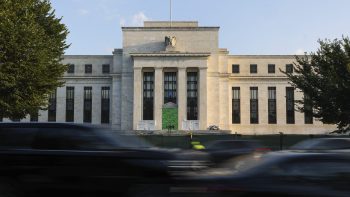What the end of Quantitative Easing will and won’t mean
Quantitative easing – it’s fun and accessible and all the cool kids are talking about it, right?
“Believe it or not, I tend to try not to talk about Quantitative Easing at cocktail parties,” says Ann Owen, an economics professor at Hamilton College. “But just a real brief explanation is that it’s a way for the [Federal Reserve] to increase the money supply by buying bonds.”
The Fed generally has two focus areas: employment and inflation. Historically, a main tool to keep each in check has been setting interest rates through its Federal Funds Rate. But back in 2008, the Fed decided it needed something more and QE was born.
Six years later, the Fed is widely expected to announce the end of QE after its Federal Reserve’s Open Market Committee meetings Tuesday and Wednesday.
Owen says while ending QE may sound like a giant leap, it’s actually a relatively small step because the Fed now has a balance sheet worth over $4 trillion.
“That’s money that in the banking system and will hopefully finds its way into the economy, says Michelle Girard is the chief U.S. economist with RBS. “As long as those reserves aren’t taken back out, through asset sales or other methods of shrinking the balance sheet, then the reserves that have already been created are still able to boost economic growth.”
Think of the Fed as a jogger who’s not slowing down or speeding up, but keeping the same pace – and there’s still a long road ahead.
The economy is clearly in a better place than it was when QE started.
But Morris Davis, a professor at Rutgers University and a former economist at the Federal Reserve Board, says he’s skeptical about how much of that is due to the bond-buying program.
“We can debate its effectiveness and we should debate its effectiveness,” he says. “But going forward, we’re going to see a lot more of this, actually, by Central Banks all around the world and I think we’ll point back to this episode as having led the pack.”
After QE, the Fed still has its more traditional tool – interest rates. Davis says it’ll probably be a while before the Fed feels comfortable enough to start raising its Federal Funds Rate in any meaningful way.
There’s a lot happening in the world. Through it all, Marketplace is here for you.
You rely on Marketplace to break down the world’s events and tell you how it affects you in a fact-based, approachable way. We rely on your financial support to keep making that possible.
Your donation today powers the independent journalism that you rely on. For just $5/month, you can help sustain Marketplace so we can keep reporting on the things that matter to you.


















